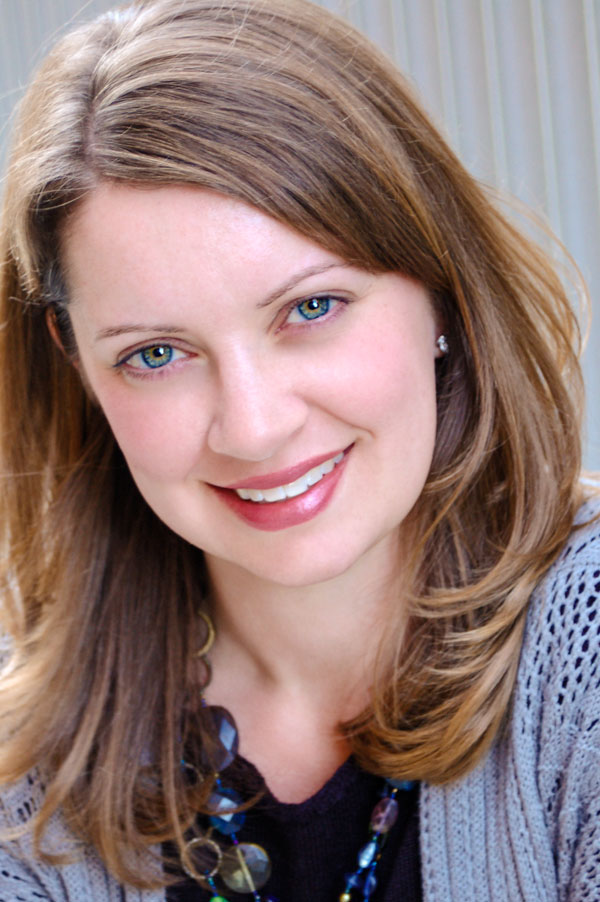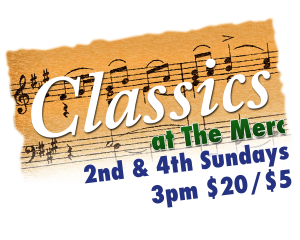Redwood Trio
Lauren Basney, violin; Peter Ko, cello; Byron Chow, piano
Today’s Program
J.S. Bach (1685-1750)
Art of the Fugue
Dmitri Shostakovich (1906-1975)
Trio No.2 in E Minor, Op. 67
Tchaikovsky (1840-1893)
Trio Pathetique in A Minor, Op. 50
Bedrich Smetana (1824-1884), arr. Chow
Z Domoviny, “From my Homeland”
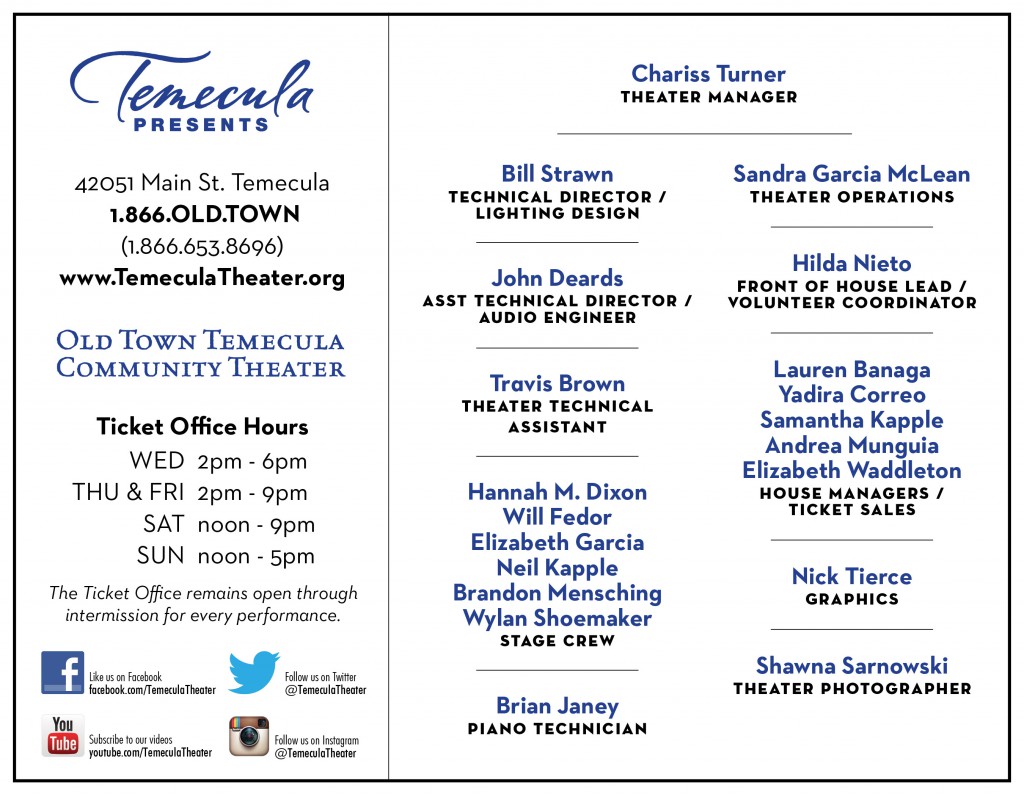

Sunday, November 19, 2023, 3:00 p.m.
Gershwin Performing Arts Center | Murrieta Mesa High School
Today’s Program
Gustav Mahler (1860 – 1911)
Symphony No. 4 in G Major
Tasha Koontz, soprano soloist
- Bedächtig, nicht eilen (deliberate, unhurried)
- In gemächlicher Bewegung, ohne Hast (in measured tempo, unhurried)
- Ruhevoll,poco adagio (calm, somewhat slowly)
- Sehr behaglich (at ease)
This afternoon’s concert will be performed without an intermission.
Thanks to the Murrieta Valley Unified School District for their support of this concert.
About our Soloist
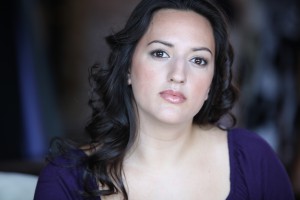 Native Hawaiian soprano Tasha Hokuao Koontz has lent her “accurate, powerful voice” (Broadway World) to a gallery of leading operatic ladies and has been recognized by Parterre Box for her “sumptuous, gleaming lyric instrument” and by Opera Wire for her “secure silvery high notes.”
Native Hawaiian soprano Tasha Hokuao Koontz has lent her “accurate, powerful voice” (Broadway World) to a gallery of leading operatic ladies and has been recognized by Parterre Box for her “sumptuous, gleaming lyric instrument” and by Opera Wire for her “secure silvery high notes.”
In 2024, Tasha will make her South America debut singing the title role of Tosca with Opera Nacional de Chile. In the same year, she returns to San Diego Opera as Donna Anna in Don Giovanni.
In 2023, Tasha joined San Diego Opera to perform the roles of Nella in Gianni Schicchi and Suor Genovieffa in Suor Angelica. A company favorite, Koontz debuted with San Diego Opera as Annina in La Traviata in 2017, and subsequently performed the roles of Edith in Pirates of Penzance, Frasquita in Carmen and High Priestess in Aïda, and covered the role of Mimì in La Bohème sung by Ana Maria Martinez. She also sang the role of Catrina in a 2019 workshop performance of El último sueño de Frida y Diego, written by Pulitzer Prize- winning playwright Nilo Cruz and Latin GRAMMY® Award-winning composer Gabriela Lena Frank. Ms. Koontz subsequently originated the role of Frida Image 1 in the world premiere performances of Frank’s opera in 2022. In San Diego Opera’s 2021 concert entitled, “One Amazing Night,” Koontz “wowed with a knockout performance” (San Diego Union Tribune).
Other 2023 performances include a debut with the Camarada Chamber Ensemble singing Brahms Op.91 Zwei Gesänge and Bach Cantata BWV 209, the Brahms Requiem with the La Jolla Symphony & Chorus, the Rachmaninov Vocalise and Poulenc Gloria with the Helena Symphony, and the world premiere of a two person chamber opera, Her New Home, written by composer Polina Nazaykinskaya and librettist Konstanin Soukhovetski with the prestigious Garth Newel Piano Quartet at the Garth Newel Summer Festival. Ms.Koontz will also return to the Del Mar International Composers’ Symposium in August to continue to bring new music to life with up and coming composers.
Ms. Koontz earned her master’s degree in music from the Jacobs School of Music at Indiana University, where she studied with acclaimed soprano Carol Vaness, and received her bachelor’s degree in music from Northwestern University.
About Our Artistic Director and Conductor
Dana Zimbric is marking her 14th season as Artistic Director and Conductor of the California Chamber Orchestra.
In addition to her work with us, she is Music Director of the Classics Philharmonic Orchestra, which performs educational programs for San Diego area students, and recently made her conducting debut with the San Diego Symphony.
Dana’s past conducting experience includes positions with the San Diego Youth Symphony, Avante Chamber Orchestra, Orchestra Nova San Diego, and the University of Wisconsin Chamber and Symphony Orchestras.
An accomplished clarinetist, Dana holds a Bachelor of Music in Clarinet Performance and a Master of Music in Orchestral Conducting from the University of Wisconsin. She lives in San Diego with her husband and two young daughters.
Members of the California Chamber Orchestra
Violin I
Wes Precourt (Concertmaster)
Violin II
Hanah Suart (Principal)
Viola
Michael Molnau (Principal)
Cello
Andrew Hayhurst (Principal)
Bass
PJ Cinque (Principal)
Orchestra Personnel Manager and Music Librarian
Michael Molnau
Flute
Pam Martchev (Principal)
Oboe
Rodion Bolusov (Principal)
Clarinet
Frank Renk (Principal)
Timpani/Percussion
Beverly Reese Dorcy (Principal)
David Whitman
Piano
Hyemi Kwon (Principal)
Harmonium
Alison Luedecke
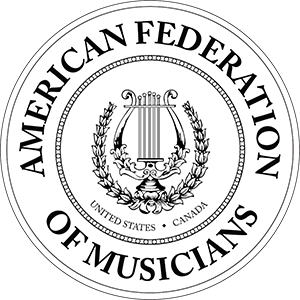
California Chamber Orchestra musicians in this concert are members of The American Federation of Musicians, Local 325
Program Notes
Austrian composer Gustav Mahler (1860-1911) wrote his Fourth Symphony in August 1900, amidst a busy symphonic and opera conducting career. Compared to Mahler’s other six symphonies, the 4th is lighter in style, with neoclassical attributes. Though Mahler’s core compositional style is steeped in Romanticism and tonal color, the 4th Symphony has more similarity with Mozart or Haydn than with composers like Brahms or Wagner.
The 4th symphony is considered by many Mahler historians to be an exploration of child-like emotions and experiences. Mahler is known to have had a difficult childhood – he grew up in a household with an abusive father; sickness and death were rampant among his 13 siblings. Mahler never lost touch with his artistic inner child and worked through this childlike lens when composing his 4th symphony.
The first movement immediately transports the listener into a fairy tale setting. Mahler chooses rhythmic sleigh bells that evoke the feeling of traveling by horse-drawn carriage into a magical setting. The melody played by the first violin is hopeful and joyful, answered by a playful clarinet. The movement is filled with moments of musical jokes and has a lively feel.
The second movement takes a much darker turn. Here, Mahler explores the raw emotion of fear. Mahler’s wife, Alma, said Arnold Böcklin’s work entitled Self-Portrait with Death Playing the Fiddle (1872) inspired this second movement. In the portrait, the artist is shown with the violin-playing skeleton of Death lurking over his shoulder and whispering into the artist’s ear. Mahler portrayed violin-playing Death via the Concertmaster’s instrument. Mahler calls for the Concertmaster to have a second violin with scordatura tuning, meaning the strings are tuned very sharp. This gives the violin a scary, haunting, other-worldly sound. During the movement, the Concertmaster switches between their two violins. The music is in a quick three, suggesting a spooky dance with Death.
The third movement starkly contrasts the prior dark music and is celebrated as one of the most beautiful slow movements Mahler ever composed. The movement begins with a heartbeat rhythm and a gorgeous melody played by the cello. Mahler depicts divine love throughout this music. Mahler takes his time in this movement, which lasts nearly 20 minutes. As the movement concludes, Mahler’s score indicates that the gates of heaven open.
According to Mahler, the fourth and final movement is a peek into heaven. It features a soprano soloist who sings a setting of “The Heavenly Life” from The Youth’s Magic Horn, a collection of German folk songs and poems published between 1805 and 1808. The text depicts a childlike angel describing paradise in heaven, where food is plentiful, and music is more beautiful than on Earth. Mahler is careful to say that the song should not be presented as a parody, but in an honest manner. In Mahler’s mind, no one would know heaven better than a child.
This chamber version of Mahler’s 4th Symphony was transcribed in 1921 by conductor, composer, and music teacher Erwin Stein (1885-1958) under his mentor Arnold Schoenberg (1874-1951). Schoenberg and other composers (including Stein, Berg, and Webern) formed an exclusive concert series in Vienna between 1919 and 1921. The concerts were open to members only and explicitly forbade critics (they even posted a sign on the door: ‘Critics forbidden entry.’) The goal of the Society for Private Musical Performances was to perform works by composers from Gustav Mahler (1860-1911) to the present (1919-21) without the worry of ‘old-fashioned’ audiences disapproving of the work, or music critics publishing scathing reviews of the new music. The Society existed to promote new music in a safe, non-judgmental environment, so much in fact, that applause of any kind was also not permitted. No printed programs were created, and the musical selections were not announced until the concert began.
During its few years of existence, the Society held 353 performances. Many of the works in these performances had first to be transcribed for smaller ensembles; the post-WWI economy demanded it. Mahler’s 4th Symphony was one of the many pieces Schoenberg and his colleagues transcribed for smaller ensemble and performed during an exclusive Society concert.
— Dana Zimbric
Text
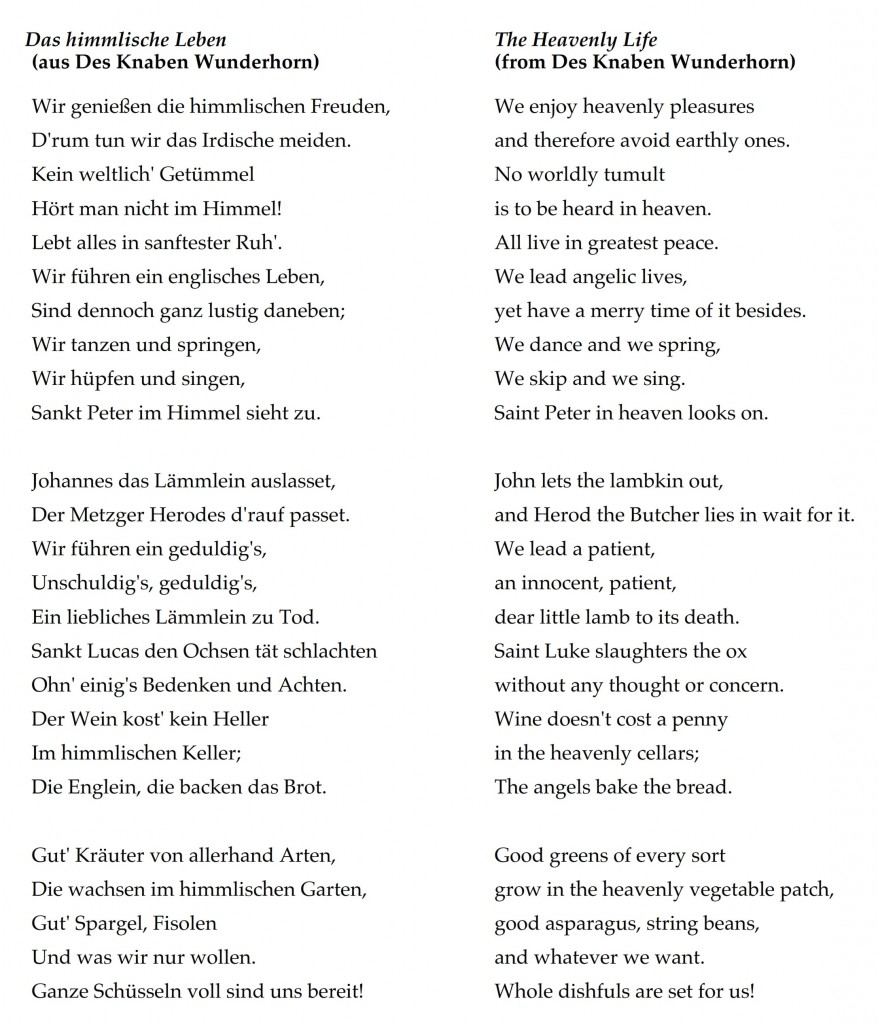
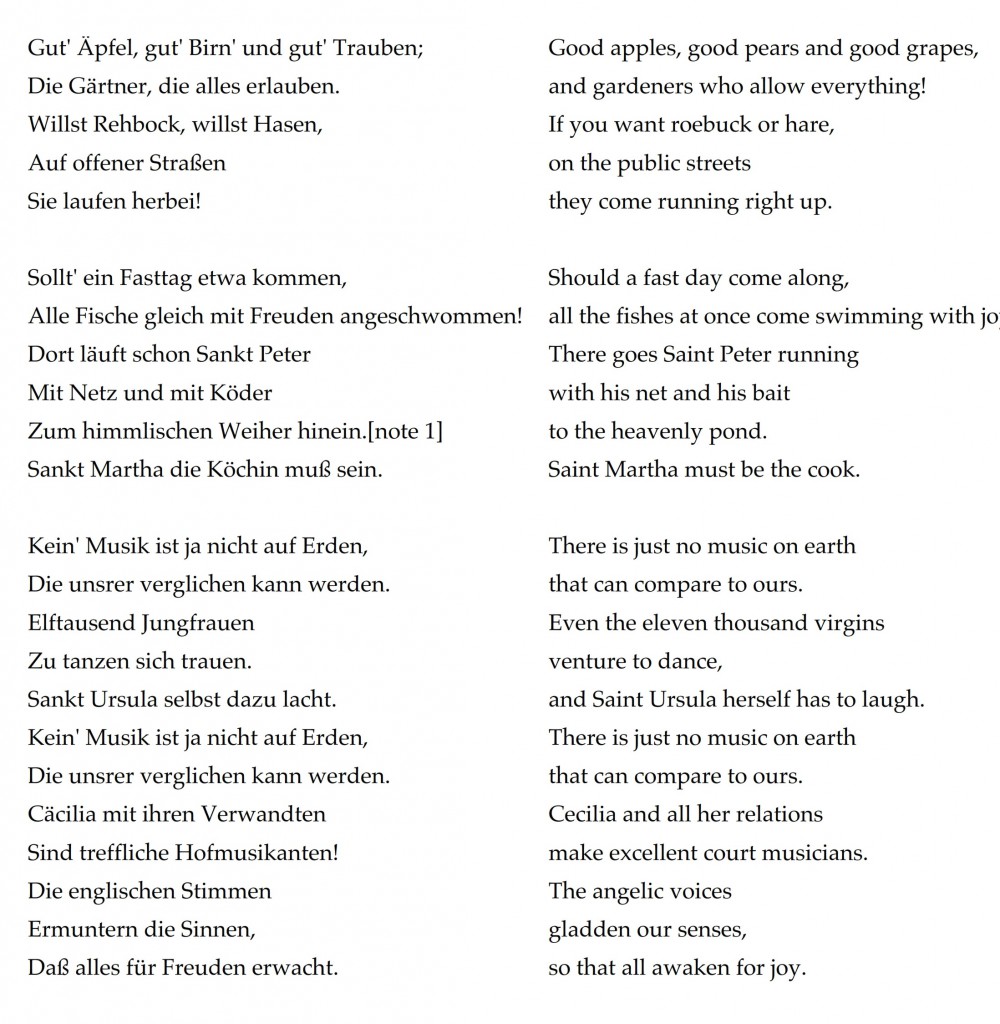
Thank You to Our Sponsors and Donors
Society Sponsors
Judy Call
Prudhomme Associates, CPAs
City of Temecula
Leslie and Joseph Waters
Season Sponsors
Mark Margolin
Nicola Helm & Stephen Ryder
Education Sponsors
Craig Carper, LaPointe Wealth Management
Murrieta Rotary
Concert Sponsors
Susan & Ken Dickson
Walt Fidler
Soloist’s Circle
Kiyoe MacDonald
Concertmaster’s Circle
Terry Kvitky
Kathryn McCarty
Barry Weiss
Rudy Wokoek
Principal’s Circle
John Welniak
Musician’s Circle
Candace Flint
Karen Hartnett
Susan Humphrey
Sarah Ivar
Martha Minkler
Sana Quijada
Join us at The Merc on the 2nd and 4th Sundays of each month for recitals by some of the region’s best musicians. These intimate performances include opportunities to hear from the musicians about their art, their careers, and the music being performed.
The Sonatina Project
Danny Holt, Piano
Today’s Program
Danny Holt’s program traces the history of the sonatina from the 18th through the 21st centuries, highlighting an eclectic array of composers–many of whom are unknown to even the most ardent classical music fans. Shining a spotlight on lesser-known composers is one of Holt’s passions, and this program does exactly that, using the genre of the sonatina as a jumping off point.
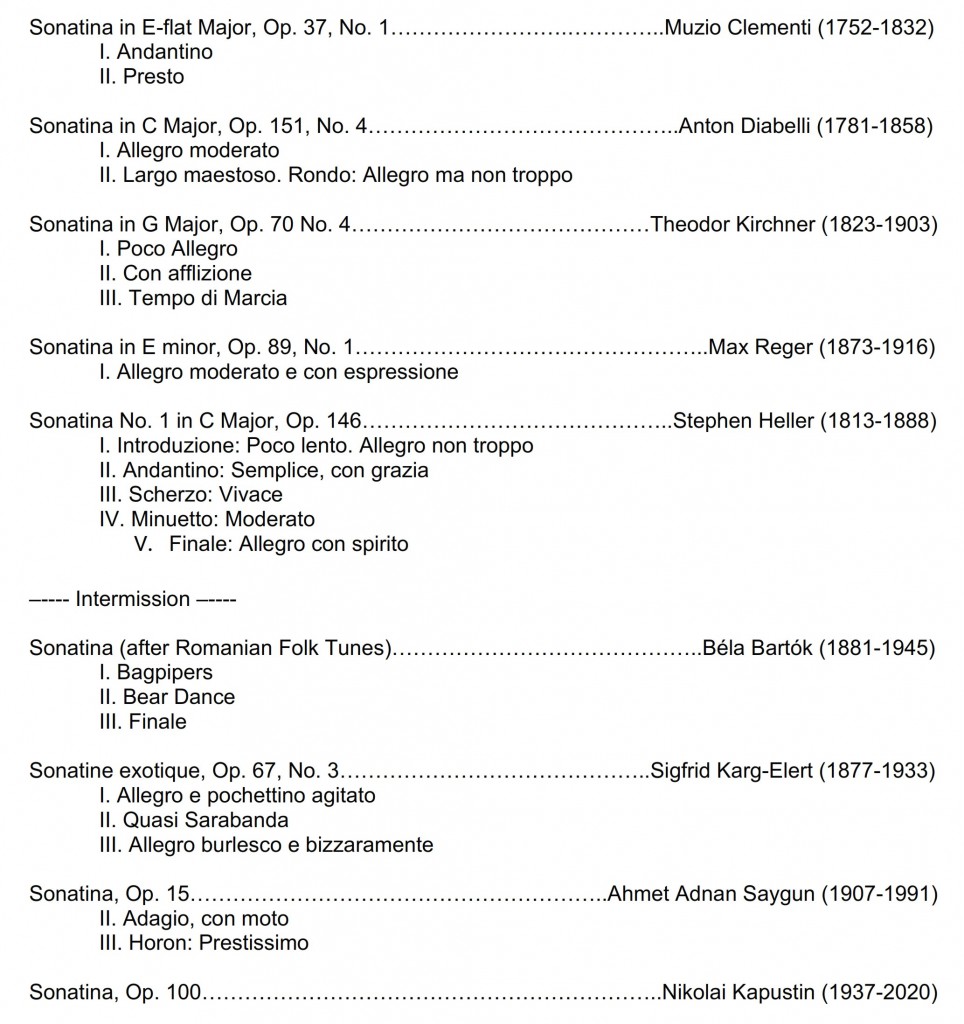
About the Artist
Called “phenomenal” by the late music critic Alan Rich, and hailed as one of the “local heroes” of the Los Angeles music scene (LAcitybeat.com), pianist Danny Holt performs around the globe in concert halls (Carnegie Hall, Walt Disney Concert Hall, Hollywood Bowl), clubs (Joe’s Pub, The Blue Whale, Copenhagen Jazzhouse) art galleries (MASS MoCA, Hammer Museum), churches, living rooms, and wherever else he can find a piano and someone to listen. His recorded catalog includes the recent solo album “Piano Music of Mike Garson” and other solo, chamber, and orchestral releases on the Innova Recordings label, pfMENTUM, New World Records, Deutsche Grammophon, and L’st records. www.dannyholt.net
 Volunteer as a Theater Usher
Volunteer as a Theater Usher
Syrinx Wind Quintet
Victoria Lee, oboe; Micah Wright, Clarinet
Patrick Olmos, saxophone; Mathieu Girardet, bass clarinet
Elizabeth Low-Atwater, bassoon
Today’s Program
George Gershwin (1898-1937), arr. Ryan Reynolds
Three Preludes
Allegro ben ritmato e deciso
Andante con moto e poco rubato
Allegro ben ritmato e deciso
Charles Ives (1874-1954), arr. Ryan Reynolds
Variations on “America”
William Bolcom (1938- ), arr. Patrick Olmos
Graceful Ghost Rag
George Gershwin, arr. Raaf Hekkema
An American in Paris
Intermission
Astor Piazzolla (1921-1992), arr. Alexa Olmos
La Muerte del Angel
Arturo Marquez (1950- ), arr. Alex Rosales García
Danzon No. 5
Alberto Ginastera (1916-1983), arr. Mathieu Girardet
Danza del trigo from Estancia
Aldemaro Romero (1928-2007), arr. Alex Rosales García
Fuga con Pajarillo
 Volunteer as a Theater Usher
Volunteer as a Theater Usher
Quartetto Sorrento
Ondrej Lewit and Jorge Soto, violins
Paula Simmons, viola; Gordon Grubbs, cello
Today’s Program
Wolfgang Amadeus Mozart (1756 – 1791)
Quartet No. 14 in G Major K.387
Allegro vivace assai
Menuetto
Andante cantabile
Molto allegro
Jessie Montgomery (b. 1981)
Strum
Intermission
Ludwig van Beethoven (1770 – 1827)
Quartet Op. 18, No. 4
Allegro ma non tanto
Scherzo. Andante scherzoso quasi Allegretto
Menuetto. Allegretto
Allegro
 Volunteer as a Theater Usher
Volunteer as a Theater Usher
Robert Wetzel, guitar
Today’s Program
John Dowland (1563 – 1626)
Earl of Essex, His Galliard
A Fancy
Henry Purcell (1659 – 1695)
Little Suite
I. Prelude
II. Minuet
III. Allegretto
IV. Jig
V. Rondo
J. S. Bach (1685 – 1750)
Andante, BWV 1003
Prelude in D Minor, BWV 999
Sarabande, BWV 1002
Courante, BWV 1009
Domenico Scarlatti (1685 – 1757)
Sonata in E Major K. 380
Domenico Cimarosa (1749 – 1801)
Sonata in B Minor
Mateo Albeniz (1755 – 1831)
Sonata in D Major
Intermission
Fernando Sor (1778 – 1839)
Estudio, Op. 6 No. 11
Claude Debussy (1862 – 1918)
The Girl with the Flaxen Hair
Maurice Ravel (1875 – 1937)
Pavane for a Dead Princess
Astor Piazzolla (1921 – 1992)
Chiquilin de Bachin
Heitor Villa-Lobos (1887 – 1959)
Prelude No. 1
Prelude No. 2
Angel Barrios (1882 – 1964)
Nostalgia de Petenera
About Today’s Performer
ROBERT WETZEL, born of Dutch and Indonesian lineage, began serious study of the classical guitar at age 15. In 1972, he began several years of private studies with maestro guitarist Angel Romero, followed by private guitar study with maestros Pepe Romero and Celedonio Romero. He still considers himself to be a pupil of the Romero family and often states, “The master-disciple relationship is a lifelong affair.”
Wetzel frequently performs as a soloist, and with orchestral and chamber music groups. He currently resides in San Diego County where he is on the music faculties of Point Loma Nazarene University, San Diego State University, and the University of California, San Diego Extended Studies.
 Volunteer as a Theater Usher
Volunteer as a Theater Usher

Sunday, September 17, 2023, 3:00 p.m.
Gershwin Performing Arts Center | Murrieta Mesa High School
Today’s Program
Arvo Pärt (b. 1935)
In spe (In the Hope)
Wolfgang Amadeus Mozart (1756-1790)
Horn Concerto No. 3 in E flat Major, K. 447
I. Allegro
II. Larghetto
III. Allegro
Darby Hinshaw, Horn
Intermission
Jean Sibelius (1865-1957)
Pelleas and Melisande Suite, Op. 46
I. Am Schlosshof (At the castle-gate)
II. Melisande
IIa. Am Meer (At the seashore)
III. Am Wunderborn im Park (A spring in the park)
IV. Die drie blinden Schwestern (The three blind sisters)
V. Pastorale
VI. Melisande am Rocken (Melisande at the spinning wheel)
VII. Zwischenaktmusik (Entre’acte)
VIII. Melisandre’s Tod (The death of Melisande)
Thanks to the Murrieta Valley Unified School District for their support of this concert.
About our Soloist
Darby Hinshaw was born into a casually musical family in San Francisco. His mother is a former organist who holds a Master of Music degree from SDSU, and his father is a great enthusiast of traditional Irish music. During his childhood he experimented with the Irish tin-whistle, the piano and the great highland bagpipes, and he frequently attended organ recitals, highland games and Irish sessions with his parents. He began playing the horn at the age of 12 and attended the “School of the Arts” high school in San Francisco. He joined the San Francisco Symphony Youth Orchestra in 1996, where he played principal horn on several critically acclaimed European tours. While still in the youth orchestra, Mr. Hinshaw attended the San Francisco Conservatory of Music where he studied with SF Symphony hornists Bruce Roberts, Jonathan Ring and Robert Ward. He earned his Bachelor of Music degree in 2005 and pursued his professional options instead of attending graduate school.
Darby is the Assistant Principal Horn in the San Diego Symphony Orchestra. Prior to arriving in San Diego, he made a place for himself in the many regional symphony orchestras in Northern California, playing principal horn in the Marin Symphony, Santa Rosa Symphony and Stockton Symphony. Over a period of six years as a freelancer, he would appear with the horn sections of 16 different orchestras, traveling all over the Bay Area and parts of the San Joaquin Valley. He also performed frequently with the San Francisco Symphony and appears on their recent recordings of Mahler’s 2nd and 8th Symphonies on SFS Media, as well as the Mahler episode of the Keeping Score series on PBS.
About Our Artistic Director and Conductor
Dana Zimbric is marking her 14th season as Artistic Director and Conductor of the California Chamber Orchestra.
In addition to her work with us, she is Music Director of the Classics Philharmonic Orchestra, which performs educational programs for San Diego area students, and recently made her conducting debut with the San Diego Symphony.
Dana’s past conducting experience includes positions with the San Diego Youth Symphony, Avante Chamber Orchestra, Orchestra Nova San Diego, and the University of Wisconsin Chamber and Symphony Orchestras.
An accomplished clarinetist, Dana holds a Bachelor of Music in Clarinet Performance and a Master of Music in Orchestral Conducting from the University of Wisconsin. She lives in San Diego with her husband and two young daughters.
Members of the California Chamber Orchestra
Violin I
Missy Lukin (Concertmaster)
Nicole Sauder
Andrew Kwon
Tiffany Modell
Violin II
Sarah Schwartz (Principal)
Tommy Dougherty
Randy Brinton
Lynne-Marie Friedrichs
Viola
Michael Molnau (Principal)
Linda Piatt
Greg Perrin
Cello
Andrew Hayhurst (Principal)
Margaret Tait
Elizabeth Brown
Bass
Kevin Gobetz (Principal)
Orchestra Personnel Manager and Music Librarian
Michael Molnau
Flute
Pam Martchev (Principal)
Oboe
Rodion Bolusov (Principal)
Clarinet
Frank Renk (Principal)
Sheryl Renk
Bassoon
Valentin Martchev (Principal)
David Savage
Horn
Darby Hinshaw (Principal)
Tricia Skye
Timpani/Percussion
Beverly Reese Dorcy (Principal)

California Chamber Orchestra musicians in this concert are members of The American Federation of Musicians, Local 325
Program Notes
Welcome to the California Chamber Orchestra’s 2023-2024 season. This season we embrace the joy of performing and sharing our art. In today’s concert, “Soundscapes,” we delve into the works of three composers who span different eras, countries, and compositional styles. Despite their diversity, each composition on this program masterfully crafts unique soundscapes that evoke powerful emotions.
Estonian composer Arvo Pärt (b. 1935) premiered “In Spe” in 2010. Based on an earlier choral piece from 1976, Pärt’s composition draws inspiration from Gregorian Chant. His minimalist style, characterized by the avant-garde technique called tintinnabuli, yields melodies of serene simplicity and profound concentration. “In Spe,” lasting 8 minutes, features the principal woodwinds and strings, creating an atmosphere of tranquility and introspection.
W.A. Mozart (1756-1791) crafted Horn Concerto No. 3 in 1787 for the virtuoso horn player Joseph Ignaz Leutgeb, a close friend of the Mozart family. This concerto, comprises three traditional movements (fast-slow-fast), showcaseing Mozart’s musical dialogue between orchestra and soloist. The slow middle movement, where Leutgeb’s lyrical talent would have been highlighted, provides a captivating interlude. The concerto employs two clarinets, two bassoons, and strings, beautifully complementing the horn’s rich tones and culminating in a thrilling, hunting-horn-inspired finale.
Finnish composer Jean Sibelius (1865-1957) unveils his mastery in the Pelleas and Melisande Suite, Op. 46. Commissioned in 1905 for a popular play by Belgian playwright Maurice Maeterlinck, Sibelius’ suite takes us through the play’s various scenes and characters. From the grandeur of the castle gate to Melisande’s haunting melody on the English horn, and the turbulent seashore depicted through musical waves, Sibelius paints a vivid auditory picture. The suite includes a whimsical waltz and pastoral respite, leading to a poignant conclusion with the death of Melisande, masterfully capturing the play’s romantic and emotional essence.
— Dana Zimbric
Thank You to Our Sponsors and Donors
Society Sponsors
Judy Call
Prudhomme Associates, CPAs
City of Temecula
Leslie and Joseph Waters
Season Sponsors
Mark Margolin
Nicola Helm & Stephen Ryder
Education Sponsors
Craig Carper, LaPointe Wealth Management
Murrieta Rotary
Concert Sponsors
Susan & Ken Dickson
Walt Fidler
Soloist’s Circle
Kiyoe MacDonald
Concertmaster’s Circle
Terry Kvitky
Kathryn McCarty
Barry Weiss
Rudy Wokoek
Principal’s Circle
John Welniak
Musician’s Circle
Candace Flint
Karen Hartnett
Susan Humphrey
Sarah Ivar
Martha Minkler
Sana Quijada
Join us at The Merc on the 2nd and 4th Sundays of each month for recitals by some of the region’s best musicians. These intimate performances include opportunities to hear from the musicians about their art, their careers, and the music being performed.
Isaac Allen & Batya MacAdam-Somer, violin
Alex Greenbaum, cello
Alison Luedecke, harpsichord
Mary Ruth Miller, Soprano
Today’s Program
Arcangelo Corelli (1653 – 1713)
Sonata in G Major, Op. 2, No. 12
Ciacona
Georg Frideric Handel (1685 – 1759)
Armida abbandonta
Dietro l’orme fugaci
Ah! crudele e pur ten vai
Per te mi struggo
O voi dell’incostante e procelloso
Venti, fermate
Ma che parlo, che dico?
In tanti affanni miei assistimi almen
Domenico Gallo (1730 – c. 1768)
Sonata in G Major
Moderato
Andantino
Presto
INTERMISSION
Barbara Strozzi (1619 – 1677)
Lagrime mie
Domenico Gabrielli (1651 or 1659 – 1690)
Ricercar No. 3 in D Major for solo cello
Alessandro Scarlatti (1660 – 1725)
Correa nel seno amato
Sinfonia – Balletto
Recitativo: Correa nel seno amato
Aria: Ombre opacho
Texts
Handel – Armida abbandonata
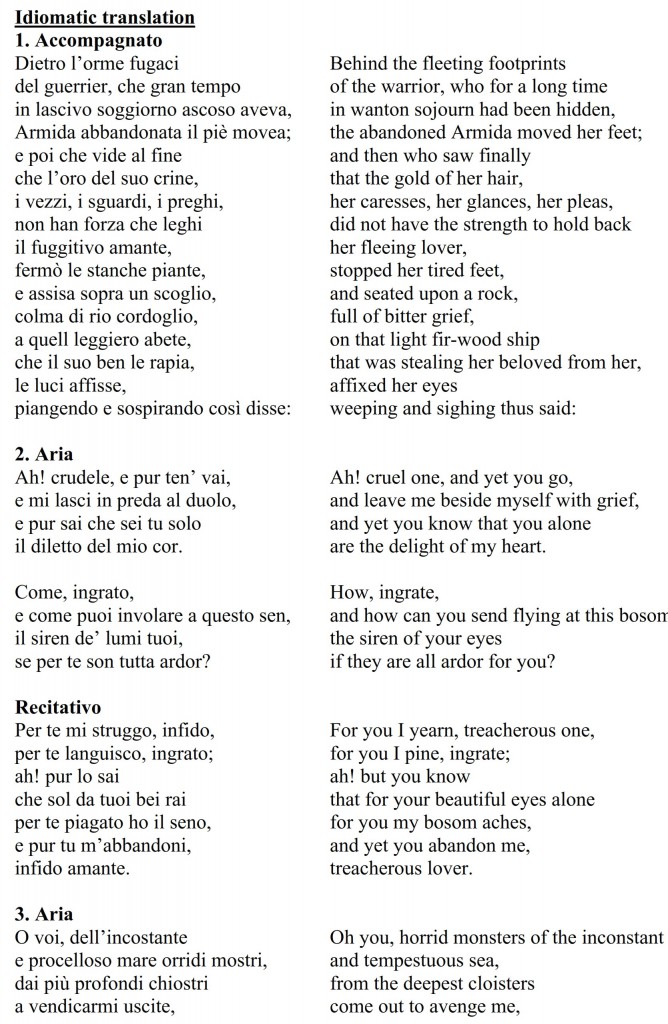
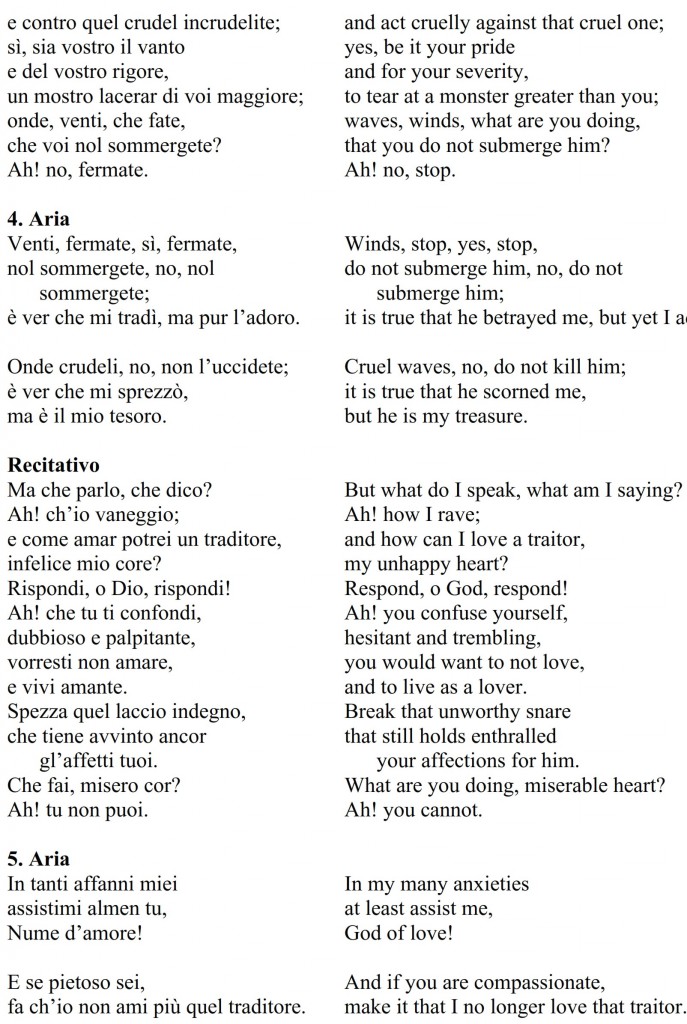

Scarlatti — Correa nel seno amato
RECITATIVO
Correa nel seno amato ver l’occidente frettoloso il sole, e con fiamme brillanti il suo carro stellato, già rivolgeva al mare il pigro Arturo, e la notte serena l’ombre fugando a fiaccole di stelle mostravasi a mortal tra le più belle.
Rosseggiante nel viso, sorgea tutta ridente dal letto pastoral la bianca Dea, e con raggio lucente nelle porpore sue mostrava Amore quante fiamme ascondea per un pastore. Ed era il tempo appunto che nel grembo dei fiori
Ringiovenisce l’anno per le gioie dei cori, quando il vago Daliso posando il fianco afflitto ai piè d’un sasso dal di cui mezzo inciso mormorando scorrea fontana algente, sfogava i suoi martiri in lagrime e sospiri, solo fra muti orrori mentre a tutti s’asconde pianti e sospiri, pianti e sospiri, confondea con l’onde. E l’umidette guancie di perle lagrimose che dal cor distillava il suo dolore tergea tutto pietà, tergea tutto pietà spietato Amore. Stanche alfin le sue membra Dal lungo raggirarsi in seno all’erbe, matire sol d’amore, fissando i lumi al cielo, Così con l’aure e’l vento Sfogava singhiozzando Il suo tormento.
The sun hastily ran towards the West to the beloved bosom, and lazily, Arturo* had already set to the ocean his starry chariot with bright flames, and the quiet night, chasing away the shadows with torches made of stars, showed itself to be amongst the most beautiful ever seen.
Aflame in her countenance, the pale Goddess rose all smiles from the pastoral bed, and with a shining beam, Love showed how many flames she hid for a shepherd in her purple robes.
And indeed it was the time in which the year becomes young again in the bosom of flowers, for the joy of all hearts, when the handsome Daliso, in sorrow, leaning on his side at the foot of a rock, whence, from its cleft midst a cold spring flowed murmuring, vented his suffering with tears and sighs. Alone, amidst silent ravines, while hiding from everyone, he mixed his tears and sighs with the waves. Cruel Love, filled with mercy, wiped from his wet cheeks the tears that his pain distilled from the heart. At last, his limbs tired from his long meandering among the grass, his torment coming from love alone, fixing his eyes to the heavens, sighing, he vented his torment to the sky and the wind.
ARIA
Ombre opache che il chiarore Della luce m’ascondete Se pur sete del dolore Fide amiche, fide amiche, Or che il desio, deh, piangete Al pianto mio.
Dull shadows, ye who hide the brightness of light from me, if you are faithful friends of suffering, now that I desire so, alas! cry along with my crying.
Today’s Performers
San Diego Baroque is a collaborative ensemble made up of some of the area’s finest early music specialists. Each artist is an accomplished soloist in their own right and has performed extensively in San Diego and worldwide, with groups such as the Academy of Ancient Music, Mainly Mozart, Bach Collegium San Diego, The Knights and the Hausmann Quartet. The ensemble was created because of the members’ enthusiasm and expertise in Baroque music, and the group has collaborated with local choirs, actors, and presented concerts and visited schools throughout San Diego County. They present Bach’s Lunch, a monthly midday concert series at St. James by-the-Sea in La Jolla, and welcome further collaborations and musical explorations in the future.
Visit sdbaroque.com for more information. Their core membership consists of violinists Pierre Joubert and Isaac Allen, violist Andrew Waid, cellist Alex Greenbaum and harpsichordist/organist Alison Luedecke.
Praised by the Boston Musical Intelligencer for her “clear soprano” and “tasteful dramatic interpretation”, MaryRuth Miller has appeared throughout North America as a concert soloist and choral artist. Recent and upcoming performance highlights include solo features with Boston’s Handel and Haydn Society, Bach Akademie Charlotte, Upper Valley Baroque, Pegasus Early Music, San Diego Baroque, the Charlotte Master Chorale, the Baldwin Wallace Bach Festival, and the Oregon Bach Festival.
An equally passionate choral singer, MaryRuth sings regularly with the Handel and Haydn Society Chorus, New York City’s Clarion Choir, and the Oregon Bach Festival Chorus, and made her debut with the Santa Fe Desert Chorale in 2022. She is an alumnus of the VOCES8 US Scholars Program and continues to collaborate with VOCES8 Foundation projects across the United States. In 2022, she could be seen singing backup for Ellie Goulding on the internationally televised Earthshot Prize award ceremony.
Originally from West Columbia, South Carolina, MaryRuth holds a Bachelor of Music Education degree from Winthrop University and a Master of Historical Performance degree from Boston University. She lives in San Diego, California.
 Volunteer as a Theater Usher
Volunteer as a Theater Usher
David Isaacs, guitar
Chelsea Camille, soprano
Today’s Program
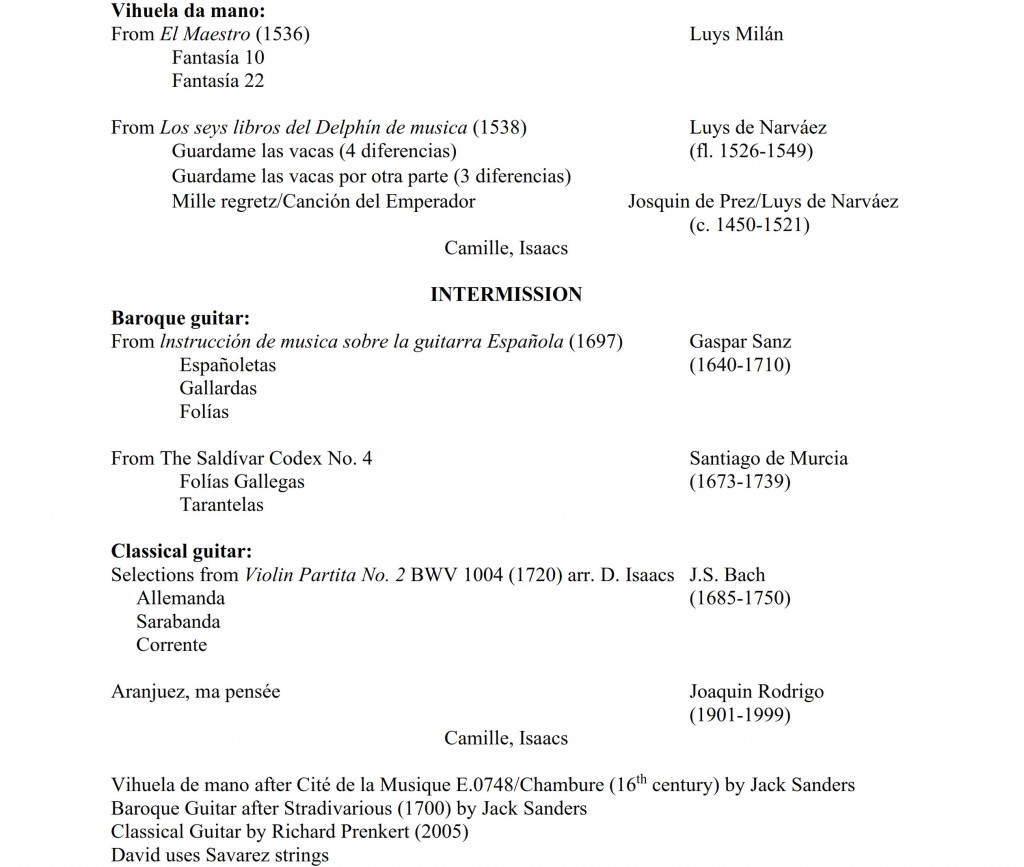
 Volunteer as a Theater Usher
Volunteer as a Theater Usher
Christa Stevens, soprano
Marco Antonio Lozano, tenor
Miloš Veljković, piano
Today’s Program
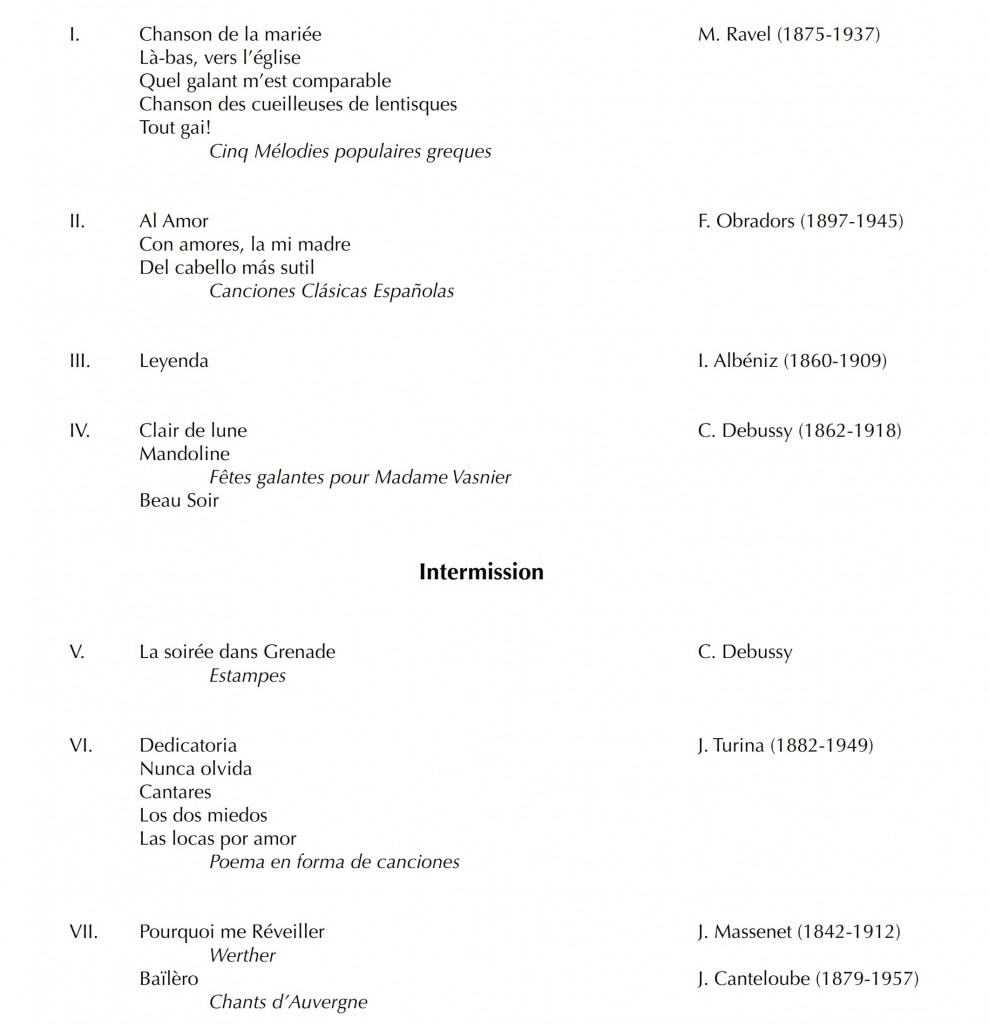
 Volunteer as a Theater Usher
Volunteer as a Theater Usher
Page 4 of 9 « First ... « 2 3 4 5 6 » ... Last »




